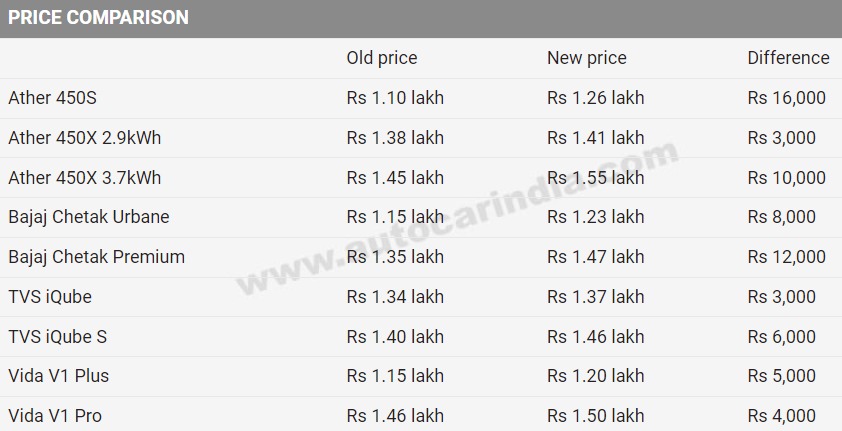The new EMPS (Electric Mobility Promotion Scheme) has come into effect from April 1 and nearly all Indian electric two-wheeler manufacturers have revised the prices of their products. Here’s the detailed break-up of the three largest players.
The Rs 500 crore new scheme ensures incentives for electric two and three-wheelers sold post the expiry of the second phase of the Faster Adoption and Manufacturing of (Hybrid and) Electric Vehicle (FAME) scheme which ended on March 31.
Ather’s sporty 450 range has seen an upward price revision of up to Rs 16,000, and interestingly, it’s the most affordable 450S that sees the biggest price hike. The 2.9kWh variant of the 450X sees a small Rs 3,000 bump up in price while the range-topping 450X 3.7kWh sees a Rs 10,000 price hike. The recently launched Rizta is the most affordable model in the startup’s line-up and to read more about that, tap here.
Bajaj’s Chetak line-up has seen a price revision to the tune of up to Rs 12,000. The Urbane costs Rs 8,000 more than it did previously while the Premium costs Rs 12,000 more. The popular TVS iQube line-up has seen a nominal bump up in price, with the base variant costing Rs 3,000 more, while the top-spec S now costs Rs 6,000 more. Hero’s EV subsidiary, Vida, has also updated the prices of both its offerings: the V1 Plus by Rs 5,000 and the V1 Pro by Rs 4,000.
Interestingly, Ola hasn’t hiked the prices of its electric scooters and has extended the current prices till April 15. The startup is planning to go public in the coming months and this could be one of the factors that is playing a part in Ola’s decision to postpone its price revision strategy. When Ola does finally revise the prices of its S1 line-up, we’ll update this story.

